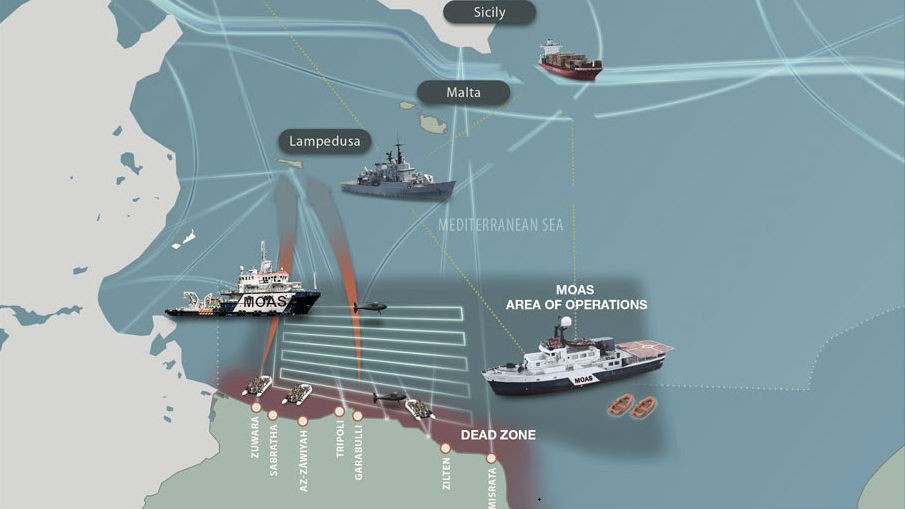MOAS Boosts 2016 Med Mission

The search and rescue charity Migrant Offshore Aid Station (MOAS) will enhance its life-saving efforts in the central Mediterranean starting on June 6 by deploying two ships and two drones. The drones will expand their patrolling area to cover what is called the ‘dead zone’: the fatal few miles from the Libyan shore.
MOAS will launch its third season of rescues in the Central Med on June 6th, with the 40-metre ship M.Y. Phoenix, which has just returned from a mission in South East Asia, and the 52-metre Responder, a new offshore emergency response and recovery vessel, that has just arrived from the Aegean after saving almost 2,000 refugees.
The two vessels will work in concert with the two S-100 Schiebel Camcopters to cover huge swathes of Mediterranean waters. The remotely piloted aircraft stay aloft for about six hours, covering around 97 nautical miles of ocean and sending back high resolution images using sensitive day or night optics.
At least 700 migrants died at sea last week in the busiest week of migrant crossings from Libya towards Italy this year. The migrants, fleeing wars, oppression and poverty, often do not know how to swim and do not have life jackets. They pay hundreds or thousands of dollars to make the crossing from Libya to Italy, by far the most dangerous border passage for migrants in the world.
“The summer of 2016 will be a defining year for Europe, Libya and the hundreds of thousands of desperate people who will be forced onto the sea to seek safety,” says founder Christopher Catrambone. “Having drones on board the Phoenix will allow MOAS to be on station in the most deadly part of the journey, the stretch of sea a few nautical miles off the coast of Libya that kills thousands of people, many of whom are buried in unmarked graves.”
After three years of constant focus on the perils of humans at risk at sea, MOAS predicts that the situation in the central Mediterranean is expected to be much different this year. MOAS hosted a conference in May that explored the developments of the migration influx to Europe. Experts from the research, medical, humanitarian and media spoke out about the changing face of the migrant crisis in 2016. MOAS says that key differences for 2016 will be: the hardened stance of Europe towards the influx, the increased violence in Libya and Syria and a general lack of choices for people desperate to find safety or hope will cause further hardship for millions of asylum seekers.
“Despite the presence of various assets at sea trying their best to saving lives, there is still urgent requirement for professional search and rescue operations as the awful incidents of last week have shown,” says Catrambone.
“I am deeply saddened that people are still dying in such horrible conditions. Last week, 45 bodies arrived in my home town Reggio Calabria. The majority were women and children.
We must not become desensitized by this humanitarian catastrophe,” says MOAS co-founder Regina Catrambone. “We all have the moral responsibility to end this. Only together we can make a difference”.
MOAS began as a specialized Search and Rescue NGO in 2014 with Search and Rescue and medical professionals on board. MOAS works with all stakeholders and is the only charity accredited by the IMRF to conduct professional search and rescue in the Mediterranean.
So far, MOAS has saved the lives of over 13,000 people.
